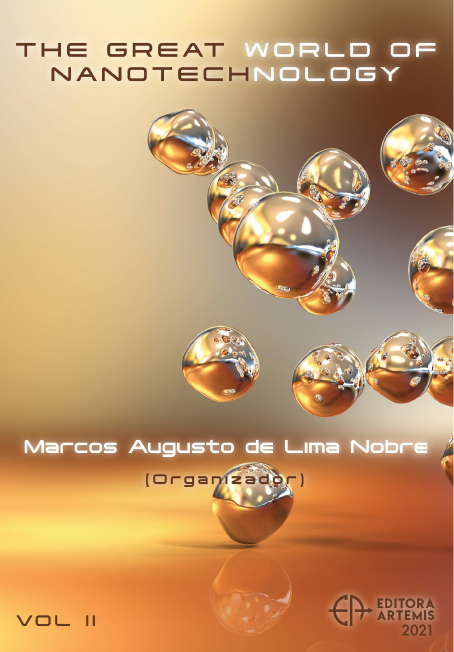
REMOCIÓN DE ARSÉNICO DE EFLUENTES ACUOSOS EMPLEANDO COMO ADSORBENTE MAGNETITA NANOESTRUCTURADA
La alta toxicidad del arsénico impulsa el interés y desarrollo de alternativas tecnológicamente viables y accesibles para remover el arsénico (As) presente en efluentes acuosos y por tanto constituye una necesidad apremiante para muchas comunidades que se ven afectadas por este problema. De acuerdo a la literatura las partículas magnéticas cumplen este objetivo y pueden ser obtenidas a través de diversas rutas de síntesis. La coprecipitación es uno de los métodos más comunes para la obtención de magnetita a partir de una mezcla de sales ferrosa y férrica en medio altamente alcalino. En el presente trabajo se realizó la síntesis de magnetita a partir de sales precursoras como Sulfato Ferroso heptahidratado (FeSO4.7H2O) y Nitrato Férrico nonahidratado (Fe(NO3)3.9H2O) en la proporción 1:1 y empleando el Hidróxido de Sodio (NaOH) para lograr un medio alcalino de pH=12. Se realizó la caracterización de la muestra final por Difracción de Rayos-X (DRX), Microscopia Electrónica de Barrido (MEB) y Análisis del área superficial (BET). El análisis de los difractogramas de DRX confirmaron que la muestra final era 100% magnetita con un tamaño de cristalito de aproximadamente 20nm. Las imágenes obtenidas por MEB mostraron que la magnetita estaba constituida por cristalitos cúbicos nanoestructurados. Los resultados del análisis BET arrojaron un valor de área superficial de 82.57 m2 /g con un tamaño promedio de partícula de 72nm. Para evaluar la capacidad de remoción del Arsénico total presente en efluentes acuosos, se consiguió un efluente industrial con una concentración de As total inicial de 1.9 mg/L y con pH=8.1. Se hicieron pruebas de remoción empleando 0.4g de magnetita por litro de solución. La magnetita sintetizada demostró tener una excelente capacidad de remoción de arsénico total en aguas ya que, en tiempos de contacto relativamente cortos, 10min, se logró remover el 99.99 % del As total.
REMOCIÓN DE ARSÉNICO DE EFLUENTES ACUOSOS EMPLEANDO COMO ADSORBENTE MAGNETITA NANOESTRUCTURADA
-
DOI: 10.37572/EdArt_30062136113
-
Palavras-chave: magnetita nanoestructurada, adsorbente, arsénico, efluente.
-
Keywords: nanoestructured magnetite, adsorbent, arsenic, effuent
-
Abstract:
The high toxicity of arsenic drives the interest and development of technologically viable and accessible alternatives to remove the arsenic (As) present in aqueous effluents and therefore constitutes a necessity for many communities that are affected by this problem. According to the literature, magnetic particles meet this objective and can be obtained through various synthetic routes. Coprecipitation is one of the most common methods for obtaining magnetite from a mixture of ferrous and ferric salts in a highly alkaline medium. In the present work the synthesis of magnetite was carried out from precursor salts such as Ferrous Sulfate heptahydrate (FeSO4.7H2O) and Ferric Nitrate nonahydrate (Fe(NO3)3.9H2O) in the proportion 1: 1 and using Sodium Hydroxide (NaOH ) to achieve an alkaline medium of pH=12. The characterization of the final sample was performed by X-ray Diffraction (XRD), Scanning Electron Microscopy (SEM) and Surface Area Analysis(SAA). Analysis of the XRD diffractograms confirmed that the final sample was 100% magnetite with a crystallite size of approximately 20nm. The images obtained by SEM showed that the magnetite was made up of nanostructured cubic crystallites. The results of the SAA analysis showed a surface area value of 82.57 m2/g with an average particle size of 72nm. To evaluate the removal capacity of total Arsenic present in aqueous effluents, was obtained a industrial effluent with an initial total As concentration of 1.9 mg/L and with pH = 8.09. Removal tests were made using 0.4g of magnetite per liter of solution. The synthesized magnetite proved to have an excellent capacity to remove total arsenic in water, because in relatively short contact times, 10 min, 99.99% of the total As was removed.
-
Número de páginas: 13
- Orfelinda Avalo Cortez
- Luis Jean Carlo Cisneros Garcia
- David Pedro Martínez Aguilar

